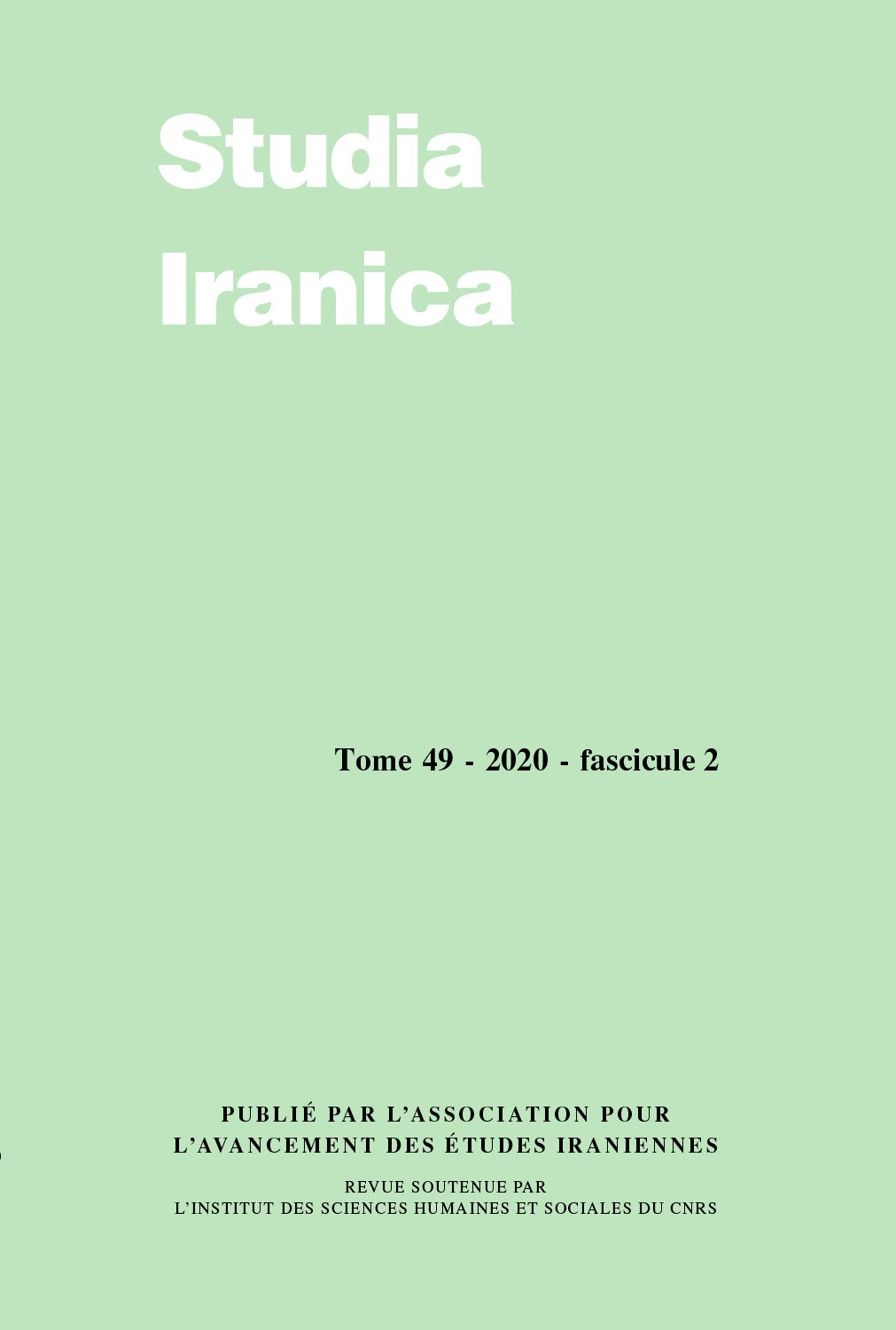 previous article in this issue previous article in this issue | next article in this issue  |

Preview first page |
Document Details : Title: L'âme humaine d'Aristote à Mollâ Sadrâ Shîrâzî Author(s): JAMBET, C. Journal: Studia Iranica Volume: 26 Issue: 2 Date: 1997 Pages: 211-236 DOI: 10.2143/SI.26.2.2003943 Abstract : À partir des positions d'Aristote et d'Avicenne, Mollâ Sadrâ Shîrâzî construit une doctrine originale de l'unité de l'âme humaine. Au contraire de Sohravardî, il admet l'unification substantielle du corps et de l'âme. L'âme humaine est une substance, de sorte qu'elle peut être la forme créatrice de toutes les fonctions corporelles. La racine de l'âme se trouve dans le Malakût, le premier degré des mondes supra-sensibles. L'âme pensante (nafs nâtiqa) unifie l'ensemble des facultés de l'âme qui sont ses propres expressions. L'acte d'être (wojûd) s'intensifie depuis la 'première naissance' de l'âme dans ce monde matériel jusqu'à la 'seconde naissance', lorsque l'âme devient une matière pour le corps spirituel. L'intensification s'explique par la théorie du 'mouvement intra-substantiel'. From the assertions of Aristotle and Avicenna, Mollâ Sadrâ Shîrâzî built an original doctrine of the unity of the human soul. Against Sohravardî, he concedes that the body and the soul are united in a substantial way. The human soul is a substance so that it can be the creative form of all bodily functions. The root of the human soul is in the Malakût, that is the first step in the suprasensible worlds. The thinking soul (nafs nâtiqa) unifies the whole of the soul's powers which are its own expressions. The 'act of being' or existence (wojûd) intensifies itself, from the 'first birth' of the soul in this material world, to the 'second birth', when the soul becomes a matter for the spiritual body. The becoming more intensive is explained by the theory of the 'substantial movement'. |
|


